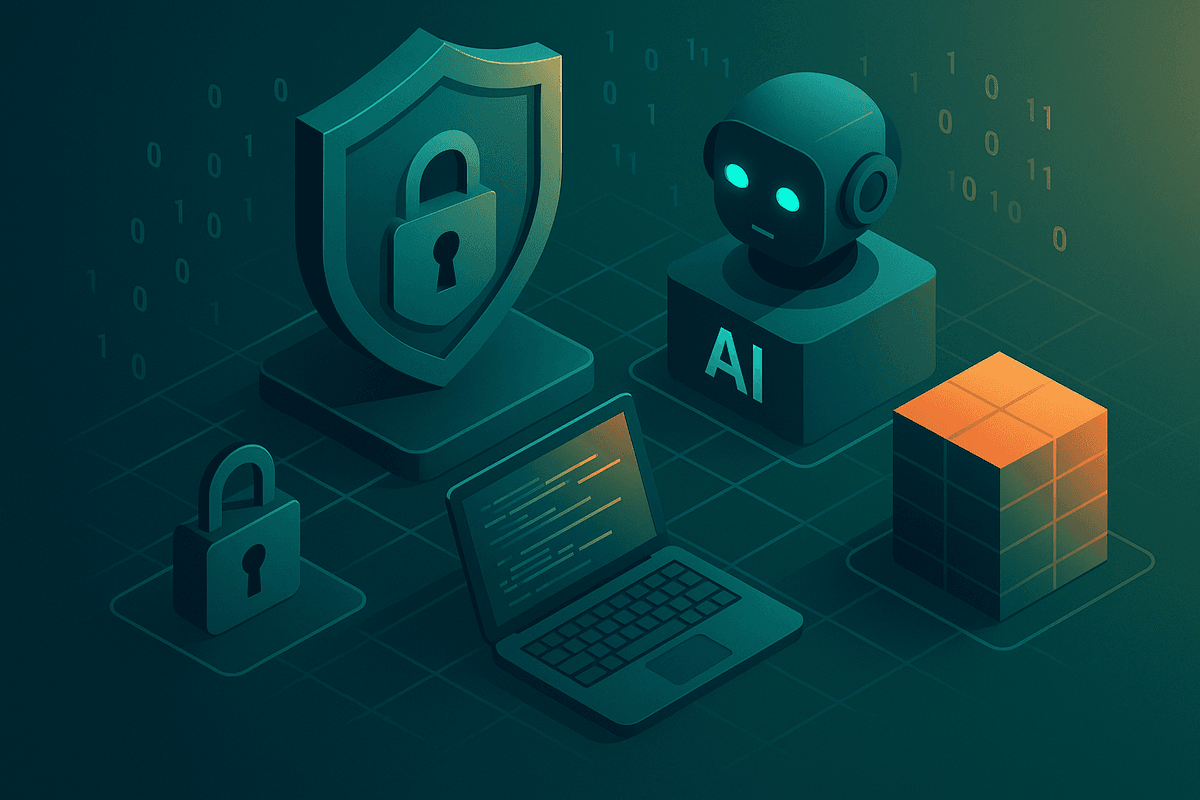Security of Enterprise AI Agents: The MCP Case, a New Threat to Smart Integration

Security of Enterprise AI Agents: The MCP Case, a New Threat to Smart Integration
⚠️ Enterprise AI adoption accelerates, but security concerns multiply—especially for architectures built on Model Context Protocol (MCP).
🔐 Seamless integration brings both productivity and unprecedented vulnerabilities.
Enterprise organizations are rapidly scaling autonomous AI agents to automate workflows and connect disparate systems. The recent examination of MCP stack vulnerabilities highlights alarming potential for compromise: the chance of exploit reaches 92% with just ten plugins. This article explores structural weaknesses in agent architectures, design pitfalls in authentication and authorization (especially OAuth flows), and critical mitigation strategies. Use cases involving NoCode/low-code integrations, automated workflows, and AI R&D tools illustrate the urgent need for robust governance and semantic safeguards.
Structural Weaknesses in MCP-Based AI Stacks
MCP-Based AI Stack Integration
Pros
- Frictionless integration
- High agility
- Rapid plugin deployment
Cons
- Increased attack surface
- High exploit probability with more integrations
- Difficult security auditing
- Independent component evolution
🔎 High Connectivity, High Risk
MCP-based enterprise AI agents thrive on frictionless integration, using plugins or connectors to tie enterprise services together. This approach increases the “attack surface.” Each additional plugin or extension becomes a potential vulnerability—creating a combinatorial problem as organizations add integrations.
| Integration Count | Estimated Exploit Probability |
|---|---|
| 5 | 45% |
| 10 | 92% |
| 15+ | >98% |
The decentralized, plugin-rich design enables agility but dramatically reduces the ability to maintain a holistic security posture. Open protocol reliance and rapid plugin deployment impede consistent auditing, especially as components evolve independently—a challenge that highlights the importance de l’‘Auditabilité par Design’ dans les systèmes IA modernes.
Inadequate Authentication and Authorization Flows
flowchart TD
A[Machine Learning Lifecycle] --> B[Data Collection]
B --> C[Data Preprocessing]
C --> D[Model Training]
D --> E[Model Evaluation]
E --> F[Deployment]
F --> G[Monitoring and Maintenance]
Authentication & Authorization Workflow Issues
Authority Validation
Validate identity and authority of each plugin or agent
Scope Assignment
Ensure appropriate, least-privilege scopes and permissions
Token Expiry Management
Manage token lifespan to reduce risk of misuse
Contextual Authorization
Implement deep, context-sensitive authorization checks
🔑 OAuth Missteps and Supply Chain Logic
Most MCP-based stacks employ OAuth or token-based access for workflow orchestration, especially in the context of advanced Multi-Agent Orchestration architectures. The report indicates frequent implementation errors:
- Inconsistent authority validation per plugin
- Overly broad scopes and permissions
- Insufficient token expiry management
- Lack of deep, context-sensitive authorization layers
Weaknesses enable lateral movement: once an agent or plugin is compromised, attackers can escalate privileges or access sensitive enterprise assets. NoCode and low-code tools exacerbate these issues by abstracting technical details, leading to incomplete understanding or misuse of complex authentication chains.
Integration Case Studies: Where Risks Emerge
📦 NoCode/Low-Code Collaboration Tools
NoCode platforms integrate AI agents via prebuilt connectors—rapidly scaling automation. However, default permission sets often remain too permissive, and change management for plugin updates is rarely mature. APIs exposed via these connectors can inadvertently leak sensitive data or operational commands.
🔄 Automated Workflow Orchestration in R&D
AI-driven agents aid in research pipelines by chaining together data sources, model APIs, and reporting layers. MCP plugins can introduce version mismatches or unauthorized data access if dependencies are not tightly controlled or reviewed.
💼 Software Supply Chain Integration
In MCP-driven architectures, agents may independently discover and install plugins. Without transparent provenance or robust signature validation, malicious or tampered dependencies can enter the enterprise environment undetected.
Mitigation Strategies: Governance, Orchestration, and Semantic Controls
🛡️ Moving from Ad Hoc to Structured Defense
Mitigating MCP stack risks for AI agents requires layered strategies:
-
Centralized Orchestration and Monitoring
- Aggregate logs and activity traces from all plugins
- Enforce real-time policy or anomaly detection using orchestration platforms
-
Granular Authorization and Token Management
- Use fine-grained OAuth scopes, reinforce short-lived tokens, activate secondary (step-up) authentication for critical actions
- Review and update token permissions as part of regular plugin audits
-
Semantic/Knowledge Graph Layers
- Deploy knowledge graphs to track relationships between agents, plugins, data assets, and permissions
- Enable semantic validation to reduce privilege escalation and detect anomalous behaviors
-
Governance at Supply Chain Level
- Mandate code provenance and plugin signature checks
- Institute role-based access and require reviews before plugin activation or agent deployment
Key Takeaways
- Plugin-based MCP stacks offer agility but introduce severe, rapidly compounding risks.
- Poor authentication/authorization design is a leading cause of potential breach and privilege escalation.
- NoCode, workflow, and supply chain scenarios amplify vulnerabilities via abstraction and automation.
- Proactive governance, orchestration, and semantic layers increase AI agent security at scale.
- Continuous auditing and integration hygiene are essential for MCP-powered enterprise AI.
Tags
💡 Need help automating this?
CHALLENGE ME! 90 minutes to build your workflow. Any tool, any business.
Satisfaction guaranteed or refunded.
Book your 90-min session - $197Articles connexes

Google Workspace Studio: No-code AI agents at the heart of productivity
Discover how Google Workspace Studio enables no code AI automation, AI agents for Gmail and Docs, and secure digital transformation of business workflows
Read article
Ontology, the Missing Pillar of AI Projects: How to Stop Your Agents From Misunderstanding Your Business
Discover how ontology and a business knowledge graph stop AI agents misunderstanding business context and build a robust semantic layer for AI projects
Read article